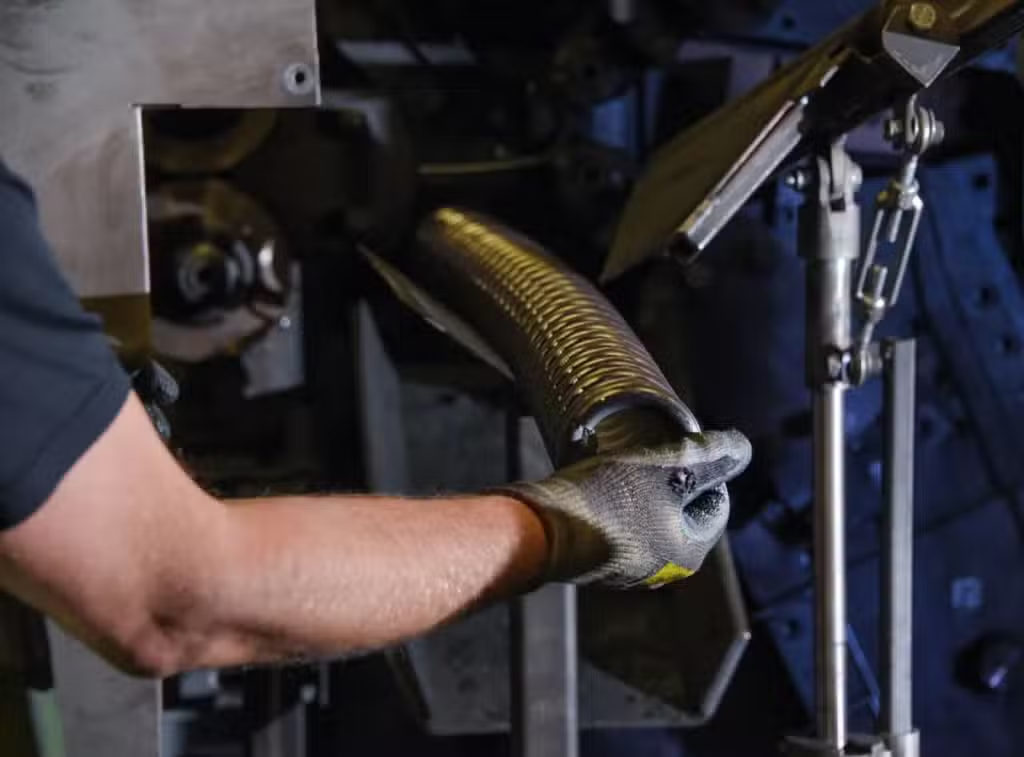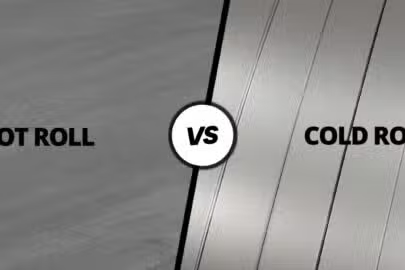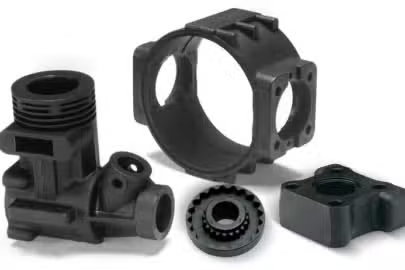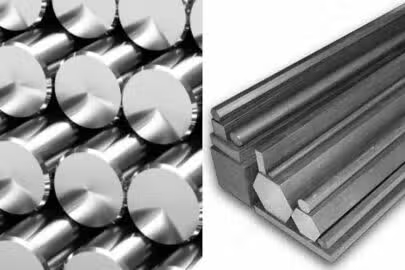Springs are mechanical parts found in a wide range of products, including watches, cars, and cell phones. They are essential for controlling force, storing energy, sustaining tension, and absorbing shock. The variety matches the diversity of spring applications in their types, materials, and manufacturing techniques, each designed to meet specific operational requirements.
For this reason, it is necessary to know them. To help you choose the best spring, this article addresses the various types of springs that are often used, their uses, materials, and the reasons for mechanical spring failures.
What Is a Spring?
It is a mechanical device that stores and releases energy through deformation. Typically constructed from materials like steel, which possess high tensile strength and elasticity, springs operate based on Hooke’s Law. According to this law, the amount of force required to compress or extend a spring within the elastic limit of the material is directly related to the distance that the spring is extended. This fundamental principle allows springs to perform their functions effectively in various mechanical systems.
Springs are everywhere in our daily lives and have numerous industrial applications. They can be found in everyday items such as pens, mattresses, and clocks, as well as in complex machinery used in the automotive, aerospace, and industrial sectors. Spring’s versatility stems from its ability to absorb and dissipate energy from impacts or vibrations, store mechanical energy when compressed or stretched, and return to its original shape after deformation. These properties make springs essential for maintaining force or tension in mechanical systems and ensuring smooth operation.
In essence, springs are essential components in many mechanical systems due to their ability to manage forces and store energy efficiently. Their applications range from providing shock absorption and energy storage to maintaining consistent force between contacting surfaces, showcasing their critical role in simple and complex mechanisms.
Different Types of Springs
Springs are classified into three main categories: disc springs, leaf springs, and helical. Here is a look into each of the categories:
Disc Springs
Disc springs, sometimes called Belleville springs, are washers with a conical form that flexes axially under stress. Their capacity to exert significant force in a small area is well known. They are divided into the following categories:
- Stacked Disc Springs: Several disc springs can be stacked in parallel or series for applications requiring a higher degree of deflection or load. The performance parameters of the spring can be altered with this stacking arrangement, enabling stronger force or more deflection as needed.
- Slotted Disc Springs: Belleville springs with slots carved out of the disc are known as slotted disc springs. Adjusting the slots can modify the spring’s load-deflection characteristics. Applications requiring accurate load management, such as control devices and precision equipment, employ slotted disc springs.
- Standard Belleville Springs: These springs are used in heavy machinery, clutch and brake systems, and valve actuators, among other applications that call for a high load capacity and small footprint. Thanks to their unusual conical shape, they can support heavy weights and absorb a lot of energy.
Leaf Springs
Leaf springs are made of multiple sheet metal layers—typically steel—joined together to function as a single unit. They give vehicles suspension because they bend when a weight is applied. There are various categories for leaf springs.
- Multi-Leaf Springs: These springs are made of several layers of clamped steel strips, sometimes referred to as leaves, layered one on top of the other. They are frequently seen in trucks and other heavy-duty vehicles, where they balance out the load distribution and absorb shock to make the ride more comfortable on uneven surfaces.
- Mono-Leaf Springs: Mono-leaf springs are composed of a single, thick steel strip, as opposed to multi-leaf springs. Because of their simpler design, they are employed in situations when a lighter load is required, including in lightweight trailers and certain automotive suspensions.
Helical Springs
Helical springs are the most widely used and adaptable because of their helical (spiral) structure. They are further categorized into smaller groups:
- Compression Springs: These springs shorten when a load is applied and are made to withstand compressive stresses. Cushions, ballpoint pens, and mattresses are just a few of the products that use them. Compression springs store and release energy effectively when the load is removed because they return to their initial length.
- Extension Springs: Extension springs are made to absorb and store energy as they are stretched, in contrast to compression springs. Usually, they feature loops or hooks on the ends so you can link them to other parts. Vehicle suspensions, garage door mechanics, and trampolines are examples of common applications. The spring can draw parts back to their initial places by creating tension when it is stretched.
- Torsion Springs: These springs provide a torque or rotating force by twisting around their axis. When twisted, torsion springs store mechanical energy, which they release when the force is no longer applied. They are utilized in items like clothespins, mousetraps, and the hinges on large doors that call for rotating force. Both clockwise and anticlockwise torque applications are possible.
Pros and Cons of Springs
Below are the different ways springs are of advantage and how they have pros in the machining process:
Pros of Springs
Here are the various advantages of springs:
- Stability of the Product
Springs absorb shock, stabilizing goods. Product stability is another way to reduce part friction and vibration.
- Power Retention
One type of spring that can be used in place of a battery is the spiral spring. The spring can produce energy and release it continuously when force is applied, making it a crucial part of the mechanical watch.
- Linking Process
Two components of a product or part can be joined together by a spring. For instance, springs are used to attach two elements so that a garage door, weighing machine, and other devices can work.
- Increased Shock-absorbing Capability
Springs are used extensively in numerous items because they can absorb shock and lessen its impact. The spring compresses and then relaxes to absorb the shock that the product receives. Springs are, hence, crucial components of automobiles.
Pros of Springs
Here are the disadvantages of Springs:
- Reduced Effects
Springs simultaneously compress and relax, gradually losing their effect. The substance employed to make them determines this. They will eventually stop adhering to Hooke’s law, which states that they will not revert to their previous shape after deformation.
- Cost
It might be costly to add a spring to some machines. This is due to the many kinds of springs, how simple they are to manufacture, how readily available the appropriate material is, and how the product is designed.
Materials Used to Make a Spring
Materials for spring
Several materials are used in the spring-making process. Here are some common material uses:
Low-Alloy Steel
Low-alloy steels are better than carbon steel because they contain molybdenum or nickel. These materials’ springs have the following characteristics: They are appropriate for use in machinery that utilizes or generates a lot of heat because of their strong heat-resistant qualities.
They have great compressive strength, which prolongs their life under axial strain. The addition of nickel, molybdenum, and chromium increases the creep strength and corrosion resistance of the spring.
Cold Drawn Wire
Work hardening, which enhances the material’s basic crystalline structure, is the source of the cold-drawn wire. As a result, cold-drawn wire springs have higher temperature, stress, and tensile strength tolerance.
Oil Tempered Spring Wire
Oil-tempered wires are excellently resistant to heat, fatigue, and permanent set-in fatigue. For this reason, oil-tempered spring wire is widely used in the automobile sector and can also be used in the production of suspension-based goods.
Stainless Spring Steel
This contains nickel, chromium, magnesium, and even carbon. Its springs offer excellent heat resistance, corrosion resistance, and yield strength. Therefore, they can be used in antennae, lock picks, and washers.
Titanium and Copper
Titanium and copper is a robust, long-lasting alloy that is resistant to heat and anticorrosive. As a result, torsion springs made of copper and titanium are primarily used in medical equipment, retractable seas, and regular door hinges.
Manufacturing Techniques for Springs
Coiling
Coiling is a fundamental step in spring CNC machining manufacturing. For smaller springs, cold coiling is typically used, involving winding the spring material, usually steel wire, around a mandrel at room temperature. Cold coiling is precise and efficient, making it suitable for producing compression, extension, and torsion springs. The wire is fed through a series of rollers and guides to achieve the desired helical shape. For larger springs, especially those made from thicker wire or bar stock, hot coiling is employed.
Heat Treatment
Heat treatment is essential for enhancing the durability and performance of springs. After coiling, springs undergo a stress relief process to remove internal stresses from the coiling process. This involves heating the springs to a moderate temperature and then cooling them slowly. For springs requiring high strength and resilience, additional heat treatments such as hardening and tempering are applied.
Surface Finish
Surface finishes procedures like shot peening and coating, are used to improve the spring’s longevity and performance. Shot peening bombards the spring’s surface with small steel or ceramic beads, inducing compressive stresses that enhance fatigue resistance and increase lifespan. Coating and plating, including zinc, phosphate, and polymer-based coatings, protect against corrosion and wear. Electroplating, which deposits a thin layer of metal like chrome or nickel onto the spring, also improves durability, especially in harsh environments.
Forming and cutting
Forming and CNC cutting processes ensure that springs have the exact shapes and lengths needed for their applications. End forming involves grinding, metal bending, or looping the ends of springs, mainly compression and extension springs, to fit into their intended applications. Precision cutting techniques are crucial for achieving the exact lengths required for extension and torsion springs, ensuring proper fit and function.
Common Solutions to Springs Failures
Spring failure is a major problem caused by many factors. Here are standard solutions to spring failures:
Material Selection and Quality
One of the primary reasons for spring failure is the use of inappropriate or substandard materials. Ensuring that springs are made from high-quality materials suitable for the specific application can prevent many issues. For example, using stainless steel for environments prone to corrosion or high-temperature alloys for applications involving extreme heat can significantly enhance spring performance.
Proper Design
Inadequate design can lead to premature spring failure. It is essential to utilize design software like that of CNC machining to accurately predict spring behavior under various loads and conditions. Ensuring the spring’s design parameters, such as wire diameter, coil diameter, and number of coils, match the application requirements helps prevent overstressing and fatigue.
Surface Treatments
Applying surface treatments like shot peening, coating, or plating can enhance the durability of springs. Shot peening introduces compressive stresses on the spring’s surface, improving fatigue resistance. Coatings and platings protect against corrosion and wear, extending the spring’s service life in harsh environments.
Regular Maintenance and Inspection
Implementing a regular maintenance schedule that includes thorough inspections can detect early signs of corrosion, wear or deformation. Detecting and repairing issues before they lead to failure ensures the longevity and reliability of the springs. Maintenance routines should include cleaning, lubrication, and checking for alignment and proper installation.
Load Management
Overloading is a common cause of spring failure. Ensuring that springs are only subjected to loads within their design limits is crucial. This involves understanding the operational environment and load conditions and selecting springs with appropriate load capacities. Employing load management strategies, such as using multiple springs to share the load, can also prevent overloading.
Correct Installation
Improper installation can lead to premature spring failure. It is vital to ensure that springs are installed correctly according to manufacturer guidelines. This includes verifying proper alignment, avoiding excessive stretching or compression during installation, and ensuring that mounting points do not introduce unintended stresses.
Conclusion
Springs are an essential component of any moving product. When compressed and expanded, they store and release energy. To select the appropriate spring, one must be aware of the types already in use. Every spring has unique properties depending on the materials used, the design, and the manufacturing process. Thus, it’s best to take the considerations above into account when deciding whether to manufacture a spring for your product.
FAQs
Where Are Springs Commonly Used?
The spring production is a common use of general manufacturing components, including parts and components for aircraft, automotive, building, electronics, medical equipment and systems, and agricultural industries.
What Is the Most Common Type of Spring?
The most common type of spring is a torsion spring. Its two ends are fastened to two distinct components to maintain their separation at a specific angle. The door hinge illustrates an application. The spring stores its rotational energy when the door opens. When the door is released, the spring returns it to its initial position by utilizing the stored energy.
What Is the Difference Between Springs and Shocks?
The springs can be adjusted to reduce nose-diving when braking, minimize body roll when cornering and accelerating, and avoid bottoming out. They play a crucial role in determining how well your automobile handles. The shocks (dampers) assist by managing and limiting the springs’ motion and taking up the impact on their behalf.
Great, Together







